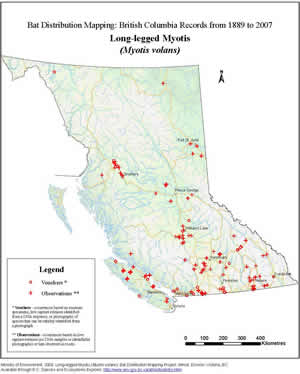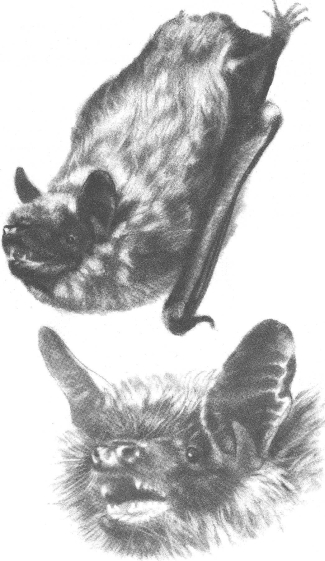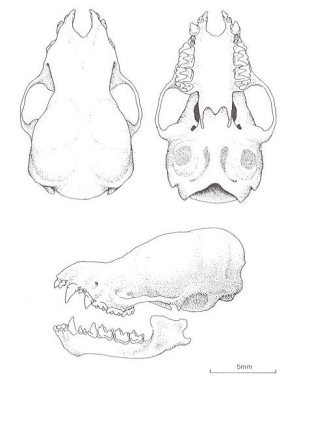Mating begins in late August or September before the bats enter hibernation. In Alberta, some males breed in their first autumn. The age of sexual maturity for females is unknown; mature females produce a single young. Reproductive data for the province are scanty. Pregnant females have been collected from 23 May to 18 July and nursing females from 25 June to 8 August, suggesting that young are born in late June and July. Recoveries of banded individuals indicate that this mammal can live at least 21 years in the wild.
|
The Long-legged Myotis emerges around dusk and remains active most of the night, even on cool nights-it is relatively tolerant of cold temperatures. This bat is an opportunistic hunter that takes aerial prey over water, forest clearings, among trees and above the forest canopy. Research in Alberta suggests that it prefers to hunt along the edges of tree groves and cliff faces. About 75% of its diet is moths; it also eats termites, spiders, flies, beetles, leafhoppers and lacewings.
|
In the western United States this bat uses buildings, crevices in rock cliffs, fissures in the ground and the bark of trees for summer day roosts. Maternity colonies are situated in attics, fissures in the ground and under the bark of a trees. In southern Alberta, maternity colonies have been found in the crevices of hoodoos. Only two maternity colonies have been found in British Columbia. One was a small colony in the attic of a house on Vancouver Island; the other was a large colony of some 300 individuals that was situated in an old barn near Williams Lake. The only information on summer roosts for males in British Columbia consists of one found in the crack of a dead poplar tree in the Kispiox Valley in July and a juvenile observed among a Yuma Myotis maternity colony in the attic of a church near Squilax in August. Caves and abandoned mine tunnels are exploited for night roosts.
There are no winter records of the Long-legged Myotis for the province. In adjacent regions (Alberta, Washington and Montana), it hibernates in caves and mines. At Cadomin and Wapiabi caves in central Alberta, swarming begins in mid August and by late September most individuals are hibernating. Evidently the Long-legged Myotis hibernates in small clusters. No specific information is available on the environmental conditions required for hibernation.
|
|



